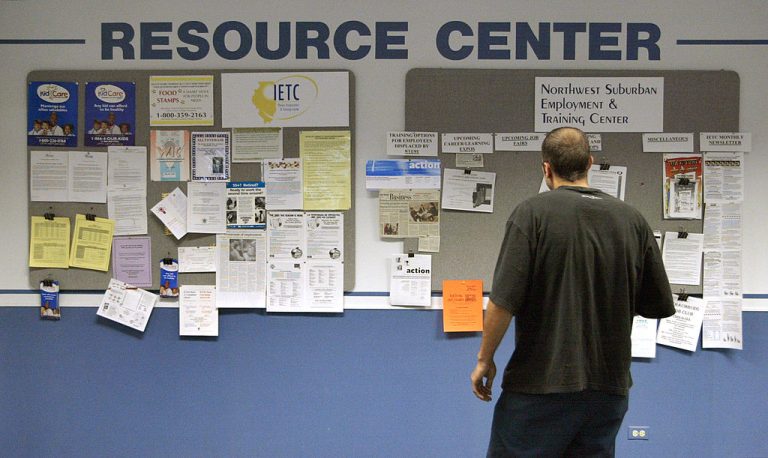An abysmal monthly Job Openings and Labor Turnover Summary (JOLTS) report issued by the U.S. Bureau of Labor Statistics (BLS) in April has shown the cracks in the American economy are finally displaying prominently.
JOLTS was issued the morning of April 4, revealing a data point that at once is considered good for the Federal Reserve’s wish to combat inflation and considered bad for growth stocks and retail-facing companies, namely that job openings for the month of February fell to 9.931 million, down from 11.601 million last February.
The report is published at the beginning of each month based on data collected for the complete month prior.
February’s figure was also down significantly from the 10.563 million logged in January, which itself is a notable figure as it was revised from over 10.8 million, according to January reporting by CNN.
MORE ON ECONOMIC AND SOCIAL CHALLENGES
- Companies Using ‘Ghost Job’ Postings to Impress Robust Growth Amid Economic Downturn
- Consumers Still Hot For Fruits and Vegetables Despite Economic Pressures
- WEF Partners Want City Governments to ‘Intervene’ in Clothing Purchases, Food, Private Flights to Save Climate
Job openings fell to their lowest reported level since May 2021, a time the economy was still plagued by the impact of COVID-19 vaccination requirements, lockdowns, and media coverage, factors which all impacted both the supply and demand side of the labor market.
Success
You are now signed up for our newsletter
Success
Check your email to complete sign up
“The January JOLTS report showed that hiring increased to 6.37 million from 6.25 million, layoffs surged to 1.72 million from 1.48 million, and quits dropped to 3.89 million from 4.09 million,” CNN stated on the prior month’s report.
In February, hires were down to 6.163 million, while layoffs fell to only 1.5 million and quits increased to 4 million.
An economist for a financial firm told CNBC that the data may be a boon for the U.S. equities market, which has continually battled in its attempts to prophesize when the Federal Reserve will cut interest rates, which have ballooned from 0.25 in February 2022 to 5 percent as of March.
“As the economy slows, firms will likely cut openings and workers will be less likely to quit in search of better hours and higher pay,” LPL Financial Chief Economist Jeffrey Roach stated.
Roach added, “The Fed could consider pausing rate hikes at the next meeting but only if the upcoming employment report shows signs of material weakness and the March [consumer price index] report reveals lower inflation.”
Notably, the report Roach references, the Non-farm Payrolls Report, is issued this month on April 7, Good Friday, when the U.S. equities markets are closed for the holiday.
“The Friday Labor Department count is expected to show a gain of 238,000, with the unemployment rate holding steady at 3.6%,” CNBC states.
In a New York Times article on the February numbers, Chief Economist for ZipRecruiter, Julia Pollak, said that the figures “looks more like a rebalancing,” noting that the prevailing trend “were way up in the stratosphere.”
In commenting on a rash of layoffs announced in March by high profile names such as Walmart, Amazon, Twitch, and even job recruiting platforms like Glassdoor, Pollak stated that the figures are “being more than offset by an absence of layoffs and discharges in the Main Street economy.”
A figure called “total separations,” which the BLS defines as including “quits, layoffs and discharges, and other separations” showed that transportation, warehousing, and utilities saw fewer workers leave, while the finance and insurance sector saw almost 40,000 less quits and the professional and business services segments saw 157,000 less layoffs in the February report.
But the NYT notes that “JOLTS is considered a lagging indicator, telling more about conditions in the recent past than offering information about what may come.”
A Reuters wire release points out that this point is particularly meaningful because “the broad drop in job openings occurred before the recent financial market turmoil, which led to tighter credit conditions and sparked fears of widespread job losses in the economy.”
A March 24 paper published by economists from Stanford, the University of Southern California, Northern University, and Columbia University found that the collapse of Silicon Valley Bank, a company lauded as a bridge between American venture capital and the Chinese Communist Party in a 2015 Stanford Business School Case Study, found there are 186 other American banks at risk of suffering the same fate.
















